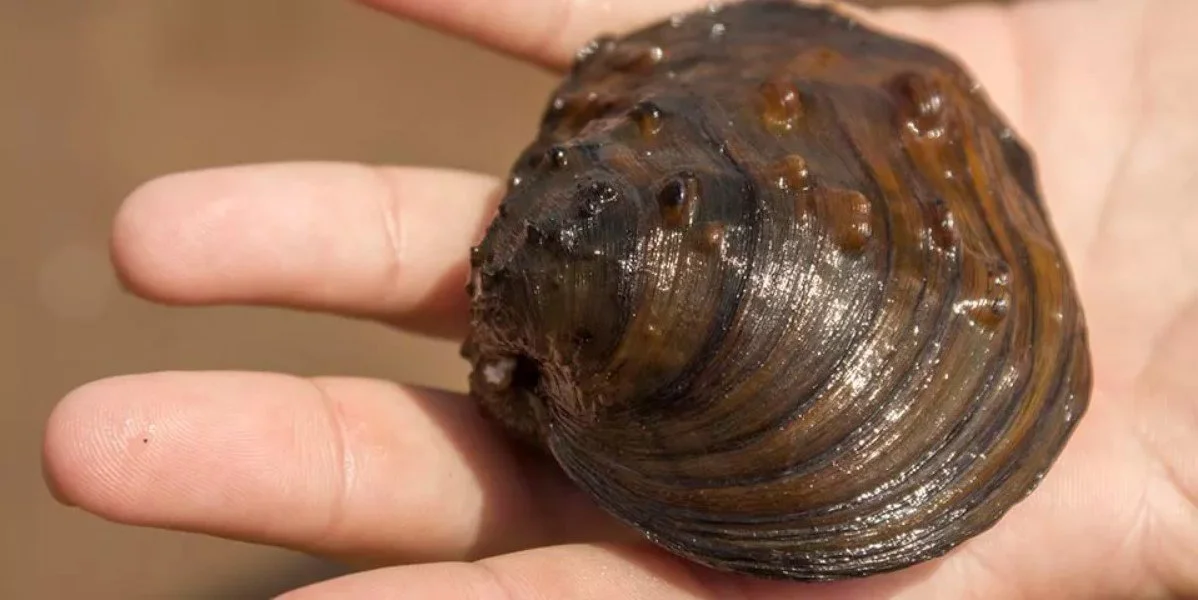The secret life of the St. Croix’s freshwater mussels
In 1968, the St. Croix River was one of the original eight rivers to be included in the newly established National Wild and Scenic Rivers system. Chief among its claims to fame are the 41 species of freshwater mussel that call the St. Croix home, including 17 state-listed threatened or endangered species, and five species that are federally listed (Higgins eye, sheepnose, snuffbox, spectaclecase and winged mapleleaf, if you want their names).
“The St. Croix River is a rare example of a complete and intact river ecosystem,” explains Marian Shaffer, an Aquatic Biologist with the National Park Service. “In fact, all of the freshwater mussel species that existed in the St. Croix Riverway before European settlement are still here today.”
Freshwater mussels filter water and cycle nutrients, helping to contribute to excellent water quality in the St. Croix and Namekagon Rivers. But, it’s not easy making babies when you’re a freshwater mussel like the endangered spectaclecase.
Spectaclecase can be found sheltering among boulders on patches of gravel and sand beneath swiftly flowing water. To reproduce, a male must first release sperm into the river current, hopefully upstream of a lady mussel. If a female that is siphoning water for food and oxygen intercepts mussel sperm in the water, she can fertilize her eggs. To grow into adult mussels, however, there is one last step. When the female spectaclecase expels her microscopic larvae into the water, the glochidia (baby mussels) have to attach to the gills of a passing fish – but only the right kind of fish – in order to grow into juveniles that can eventually live on the river bottom. For spectaclecase mussels, goldeye and mooneye are the fish of choice.
DNR, University of Minnesota, and National Park Service biologists display 100+ year old spectacle case mussels found in the St. Croix River. Photo credit: Marian Shaffer, National Park Service. From stcroix360.com.
This past year, researchers with the National Park Service, Wisconsin DNR, and University of Minnesota made a startling discovery when they found a population of elderly spectaclecase mussels living in the St. Croix River above the Taylors Falls Dam. Since it was constructed in 1905, the dam has permanently blocked mooneye, goldeye and other fish from swimming upriver, thereby dashing the parental hopes of spectaclecase living above the dam. The adult mussels have continued to survive however, and are now well over 100 years old.
In addition to monitoring existing mussel populations, the National Park Service has also partnered with the U.S. Army Corps of Engineers to reintroduce mussels in locations along the Mississippi and St. Croix Rivers where they once lived. Between 2002 and 2012, National Park Service released Higgins eye mussels at ten sites along the St. Croix and Mississippi Rivers. This summer, divers found young Higgins eye mussels, two to eight years old, near Hidden Falls in the Mississippi River. These young mussels demonstrate that natural reproduction is happening and give hope for a future where the Mississippi is also full of native freshwater mussels.
Winged mapleleaf. Image from National Park Service, St. Croix National Scenic Riverway.
In another study, the National Park Service and partners are tracking channel catfish, the host species for winged mapleleaf mussels. Last summer, researchers caught and implanted several fish with tracking devices, then immersed them in a “bath” of water filled with winged mapleleaf larvae for 15-minutes to allow the larvae time to attach to the fish. Over the past five months, the researchers tracked the catfish as they swam all the way down to the Mississippi River in Prescott and then back to just below the Taylor’s Falls Dam, where the existing population of winged mapleleaf mussels lives.
Threeridge mussel from the Namekagon River, another native species.
Across the United States, almost two-thirds of all freshwater mussel species are threatened, endangered, or already extinct. In order to protect freshwater mussels in the St. Croix Riverway, it is illegal to take any live mussels or shells from the St. Croix or Namekagon Rivers.
To learn more about the St. Croix’s freshwater mussels and see videos of them displaying to attract fish, go to: www.nps.gov/sacn/learn/nature/mollusks.htm.


